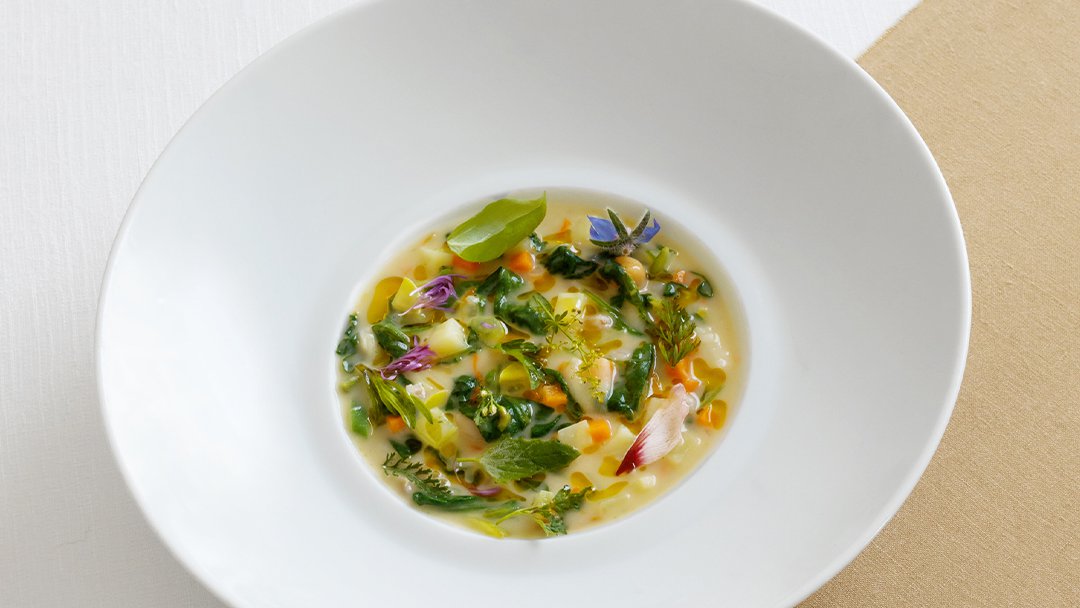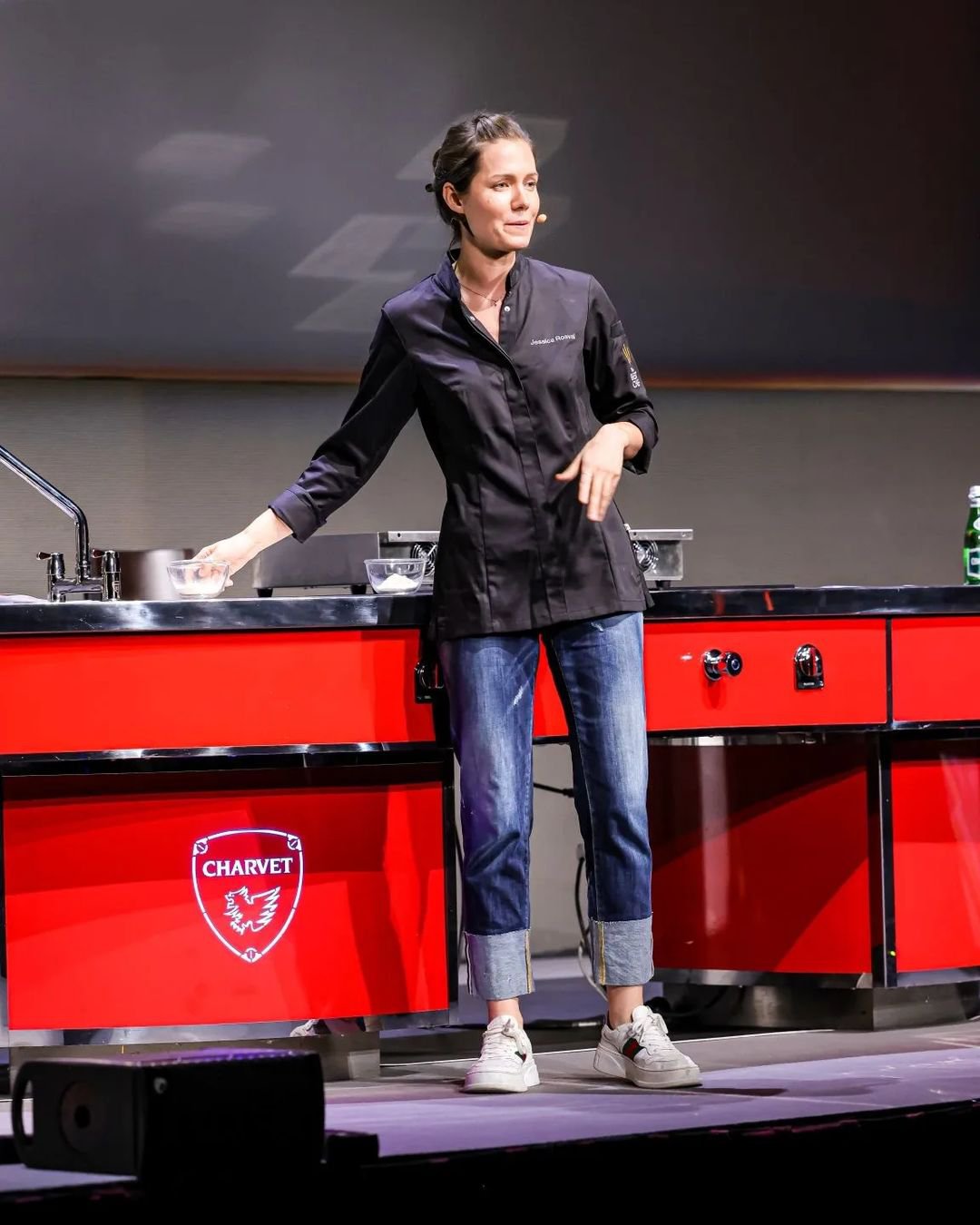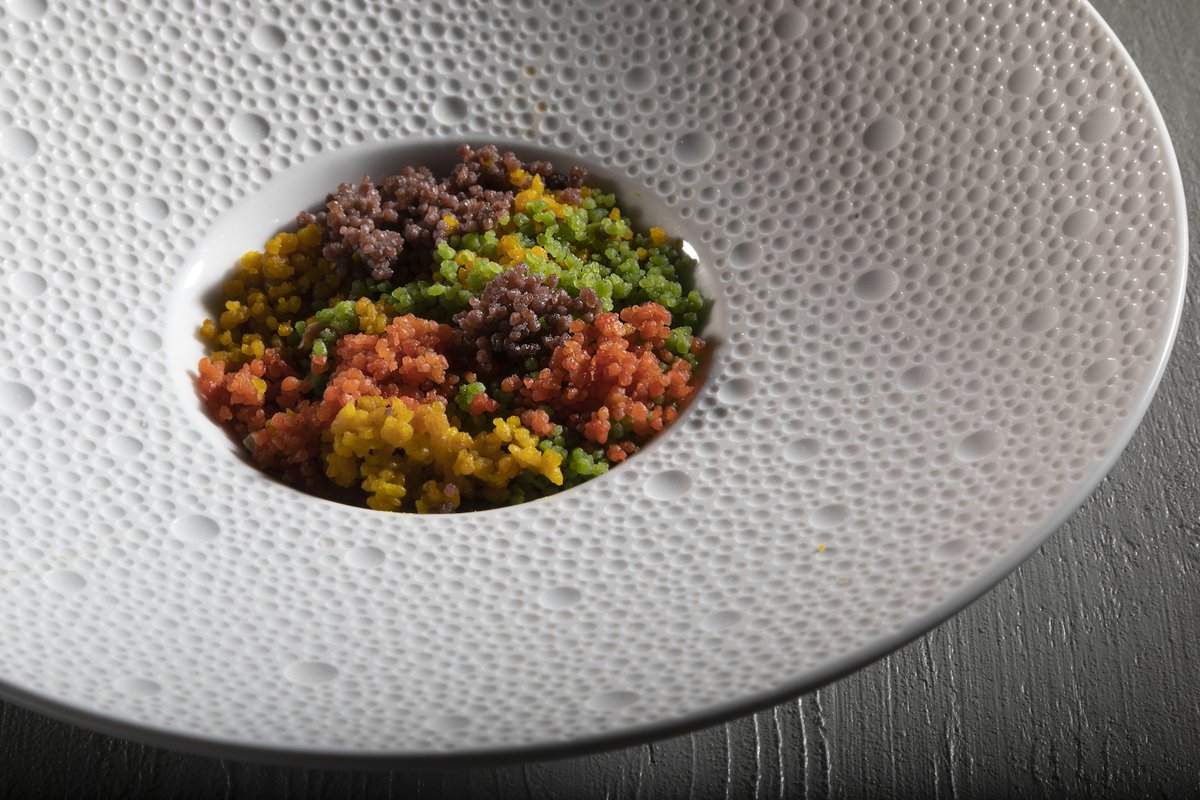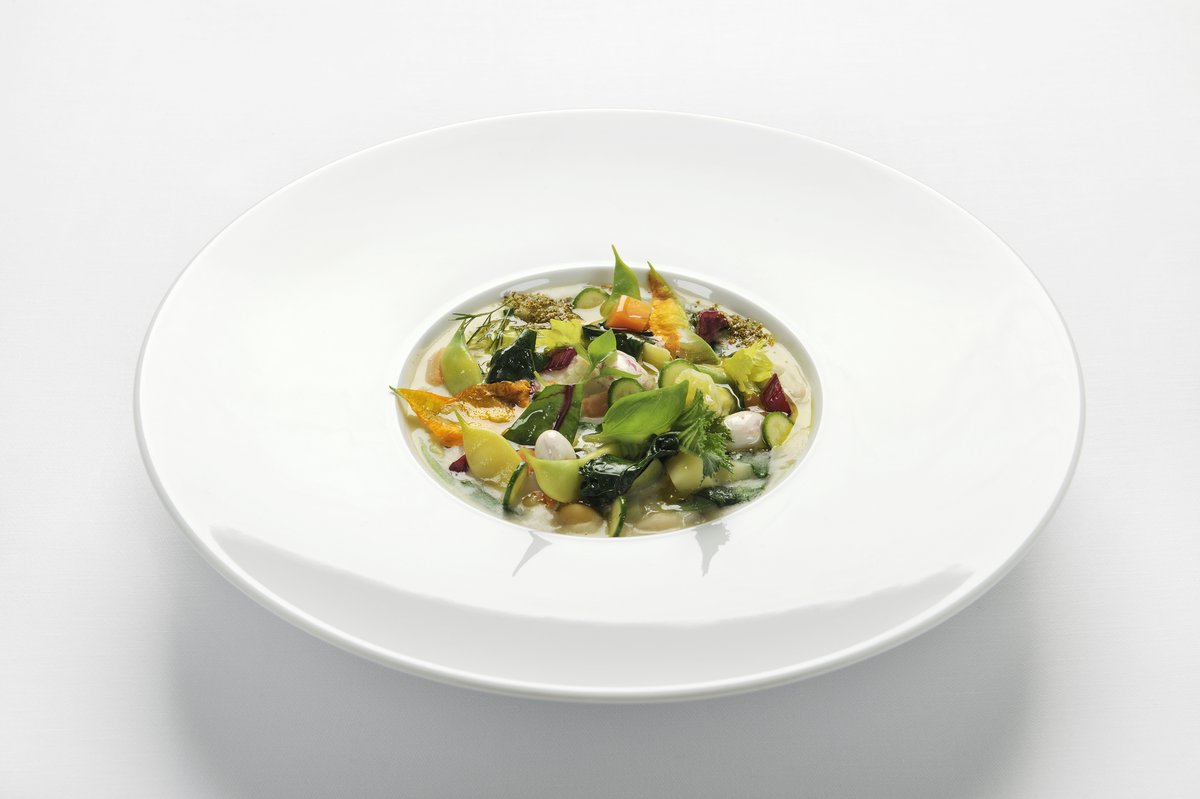The importance of pulses - from a stigmatised plant-based staple to a fine dining dish of flavour and elegance.

As it was written by Pope Francis in his message for World Legume Day earlier this year… “Legumes are a noble food with enormous potential to strengthen global food security. They are free of superiority and do not reflect luxury. They constitute an essential component of healthy diets. They are simple and nutritious foods that overcome geographical barriers, social affiliations, and cultures."
The growing attention to pulses is also evident in their positive attributes towards the climate, food production, and food security. Pulses are a unique nutritious food that has a low carbon footprint, being efficient in water consumption and soil use.
The historical heritage might have stigmatised this glorious food, but nowadays we see it as a protagonist in plant-based diets all over the world, along with the rediscovery of historical dishes which are being modernised and are finding a place within our modern diets. As for fine dining, some chefs are still reluctant to embrace the pulses. We have explored the current state of play with regard to pulses within the Italian culinary scene and talked at length with renowned local chefs to gain a deeper understanding of views on the subject within the industry.
Pulses, the dried, edible seeds of plants in the legume family, come in a variety of shapes, sizes, and colours. According to the United Nations Food and Agriculture Organization (FAO), there are 11 types of pulses recognised, including: dry beans, dry broad beans, dry peas, chickpeas, cow peas, pigeon peas and lentils. Hundreds of varieties of pulses are grown in 173 countries around the world.
It is estimated that humans have been growing and eating pulses for more than 11,000 years. The first known mention of beans and chickpeas dates back to the 8th century BC in Homer’s famous poem The Iliad. Through the ages, pulses have been nourishing cultures all over the world. In modern times, the market for the global production of pulses was estimated to be 70 million tonnes in 2010, while in 2016 the United Nations recognised the importance of pulses by declaring it the International Year of Pulses, and introducing a World Pulses Day that is celebrated annually on February 10th.
By 2050, global pulse production could double again, providing the rapidly growing world with a much-needed source of healthy, sustainable protein.
In May 2020, the European Commission adopted a comprehensive new biodiversity strategy to bring nature back into our lives and a farm to fork strategy for a fair, healthy, and environmentally friendly food system. These strategies were developed in order to reinforce the bringing together of nature, farmers, businesses, and consumers to work jointly towards a competitively sustainable future. The strategies are also a method of advocating for a more plant-based diet with less red meat, less processed meat.. Basically, encouraging a transition to healthier and more sustainable diets, which includes a decrease in animal protein consumption (by at least 20-30% and preferably 50% – compared to 2010 levels), fostering competition within the EU supply sector. Last year, the highest volumes of pulse consumption were noted in France, Spain, and Italy. France and Spain had the highest volumes of pulse production in 2021, together with Lithuania, with a combined 47% share of total production in the EU. When it comes to pulse exportation, France is one of the largest supplying countries.
Italy is the EU’s second biggest producer of fresh beans, chickpeas, lentils, and other fresh pulses. The Italian pulses market decreased slightly in 2021, but nevertheless, remained relatively stable against the previous year. Russia, Canada, and Ukraine are the main suppliers of pulses imported to Italy.
Dry beans, chickpeas and lentils are not produced in any large quantity in Italy, so the demand is covered by imports from Canada, the USA, Argentina, and China.
Pulses are traditionally grown in greatest quantity in developing countries, which contributes 70% of global pulse production (excluding dry peas). For example, India produces about a quarter of the world’s pulses, which in 2011 amounted to 17 million tonnes. In the current global outlook, India remains the largest pulse-producing country worldwide, accounting for 25% of the total volume.
Developed countries, such as Canada and the USA, are also significant growers, and pulses represent an important crop for farmers in these countries as well. In developed countries where pulses have represented a less important part of traditional diets, a fair share of the production is destined for export. Canada accounts for approximately 35% of global pulse trade each year, reaching a value of nearly $2.7 billion in 2011. In 2021 Canada remains the largest pulse supplier worldwide, comprising 24% of global exports.
The predictions for the European Pulses Market are set to expand at a CAGR of over 3% during the next decade as pulses remain the main source of protein in the plant-based food movement. Collectively, Spain, France and the UK account for 60% of European pulse consumption. With respect to product type, dried beans are likely to be the most consumed across most countries.
On the nutrition side, The World Food Programme (WFP) includes 60 grams of pulses in its typical food basket, alongside cereals, oils, sugar and salt. Pulses are making part of all recognised ‘food baskets’, dietary guidelines and contribute significantly to the acclaimed Mediterranean diet.
From medieval times, legumes have borne the stigma of being food for the underprivileged classes, with the abundant consumption of meat being seen as an expression of superiority for the rich and powerful. Legumes were stigmatised as ‘the meat of the poor’. During the Renaissance in Italy, the new bourgeois cuisine reached its maximum expression, in many cookbooks of the time we find the presence of fresh and dried legumes well represented such as in Artusi's book La scienza della cucina e l'arte di mangiare bene and in Ingegnoli's 1895 cookbook "Come si cucinano i legumi".
Today, we see how pulses have been transformed from a stigmatized ‘poor’ food, to become vital components of widely practised plant-based diets. An element of nutrition for the people who make conscious choices in line with nature and the earth. Pulses are also highly present in traditional regional Italian cuisine, and are still often served in casual, family-run eateries. However, the fine dining menus very rarely represent their glory and these foods tend to be excluded from the refined restaurant tasting menus.
Nevertheless, some chefs are strongly convinced of the potential for using pulses in fine dining menus, not only from the nutritional point of view, but also considering the cultural importance, the cultural value and meaning for the country.
Anthony Genovese, the chef of the two-Michelin-starred Il Pagliaccio in Rome, once said "gourmets do not appreciate or understand the potential of pasta and legumes; when I put it on the menu, it is the least popular dish”, referring to one of the most classic flavor combination in the Italian gastronomy.
Canadian chef Jessica Rosval, who is currently working with Massimo Bottura as a head chef at Casa Maria Luigia, restaurant and guesthouse in the Emilia Romagna countryside, recently made an appearance at the Best Chef Awards, taking to the stage to demonstrate a fantastic, yet unconventional way of using legumes in restaurant dishes. The process involves making flour from legumes and mixing it with other flavours such as green pea flour, lentil flour with roasted peppers and harissa, chickpea flour with almond milk and saffron and fava bean flour with cacao and pomegranate.

Jessica Rosval during The Best Chef "Food meets science"
As she points out: “In 2022 it’s time to open our minds and invite in ingredients such as legumes, that are full of flavour, nutrients and textures. If we can bring them in and start transforming them, we might even develop new techniques, new unexpected flavours, we just need to open our minds and our hearts.”

"Sacred Seeds” dish by Jessica Rosval
One of the fine dining establishments that has celebrated more than 10 years in business is restaurant Aimo and Nadia in Milan. The restaurant maintains the legacy of using legumes and strives to position them rightfully within their fine dining offering. The restaurant currently uses around 10 types of pulses including fava beans, Nano di Dolino peas, black chickpeas from the Murgia Carsica, and lentils of Casteluccio in Basilicata, honouring them as a hallmark.
According to chef Alessandro Negrini, “legumes are not present so much in fine dining because in the common imagination there is this vulgar image of the legume. And that is so wrong because there is no more refined thing than a spoonful of beans cooked to perfection. These thin bulbs filled with cream, pink in colour, are extraordinary. Evidently to make them elegant you have to know cooking techniques, and understand the flavours.”
With regards to Italy, the chef mentioned the issue of the majority of legumes being imported, and so they often have a less intriguing flavour, while in Italy there is a great biodiversity of legumes, in all regions there are cultivations of extraordinary beans in small quantities and at a very high cost.
Chef Negrini goes on to discuss another point as to why pulses are not heavily used in fine dining, and that would be, the knowledge of cooking. He states “For instance, I have seen cooks peeling, splitting the beans in half, while the bean has to be cooked in such a way that it remains whole, it’s a precise process with beans having such a thin skin, and being full of cream. It is important workmanship. Also, the local fine dining scene has taken a direction that, let's say, is less Italian, both in terms of aesthetics and taste. Evidently pulses do not gain such an important connotation. In Japan, for example, they use beans so much, even the bean-based desserts, in Italy you can hardly find this.”
Using legumes is not only a courageous move for chefs, but also one of great pride, showing their knowledge of the excellence of Italian cuisine but also an ability to make it shine on the menu.
The dish Negrini recalls as his favourite is the "Etruscan soup with seasonal vegetables, pulses, Garfagnana spelt and wild fennel flowers", a typical poor people’s food originating from Tuscany. A dish representing the high quality of Italian pulses. “In this dish you find three types of pulses, actually four; cannellini beans puree, chickpeas from Pratomagno, depending on the season chickpeas from Murge (an indigenous variety from the Cassano delle Murge area in Puglia), Sorana beans, Nano di Zolino peas or Trasimeno beans that have almost disappeared, and we buy 10 kilos of them a year, or beans Dall'occhio (they have almost disappeared too and are grown only in some areas of Puglia, Tuscany and Veneto).”
As for other chefs, for Negrini it is a case of “popularising the style of cooking that is not ours (not Italian), and so young people follow it. There is a lack of strong example. You need to generate action. If they promote non-Italian cuisine where there are no legumes, then young people won't use them. I am liberal, but obviously we need to start describing great Italian cuisine in a kind of dialogue, to execute it and make it, we have to be proud of it. Take Blooming Casteluccio lentils for example, this is an extraordinary portrayal of our territory, we also need to know how to describe Italian cuisine in all its excellence.”

The "Etruscan soup" by Aimo e Nadia
Gennaro Esposito, two-michelin star chef from the restaurant Torre del Saracino, thinks that the use of pulses in fine dining depends on the culture of the chef and his ability to interpret and contextualise them in the menu. Italy is a country of beans. As with potatoes or onions, it’s impossible to talk about Italian excellence if there is a lack of a feeling of sophistication towards pulses and the ability of the chef to interpret and create great dishes with them.
“The attitude towards legumes should be focused on them being a main ingredient in the dish, as, from a nutritional point of view, they are rich and provide very important protein, and then from the complexity of taste it’s like a blank canvas to be challenged. My generation inherited a great example, ‘pasta e ceci’, a pasta dish with chickpeas created by chef Fulvio Pierangelini. A dish that has been copied a thousand times. This means that a great chef must be an example for young people, showing the way of sustainability, territory and Italian authenticity.”
“In my cooking I use beans, some of them are grown by my father, the light white ones. We have legumes from all over Italy, there’s so much choice. I love dried fava beans and we often put them in our dishes. Today unfortunately, the world is focused on things that are Instagrammable, and maybe often legumes have shapes, textures and colours that are not incredibly photogenic for those who superficially consider image to be more important than substance. But by setting the right example, this trend can be turned around and put right.”
